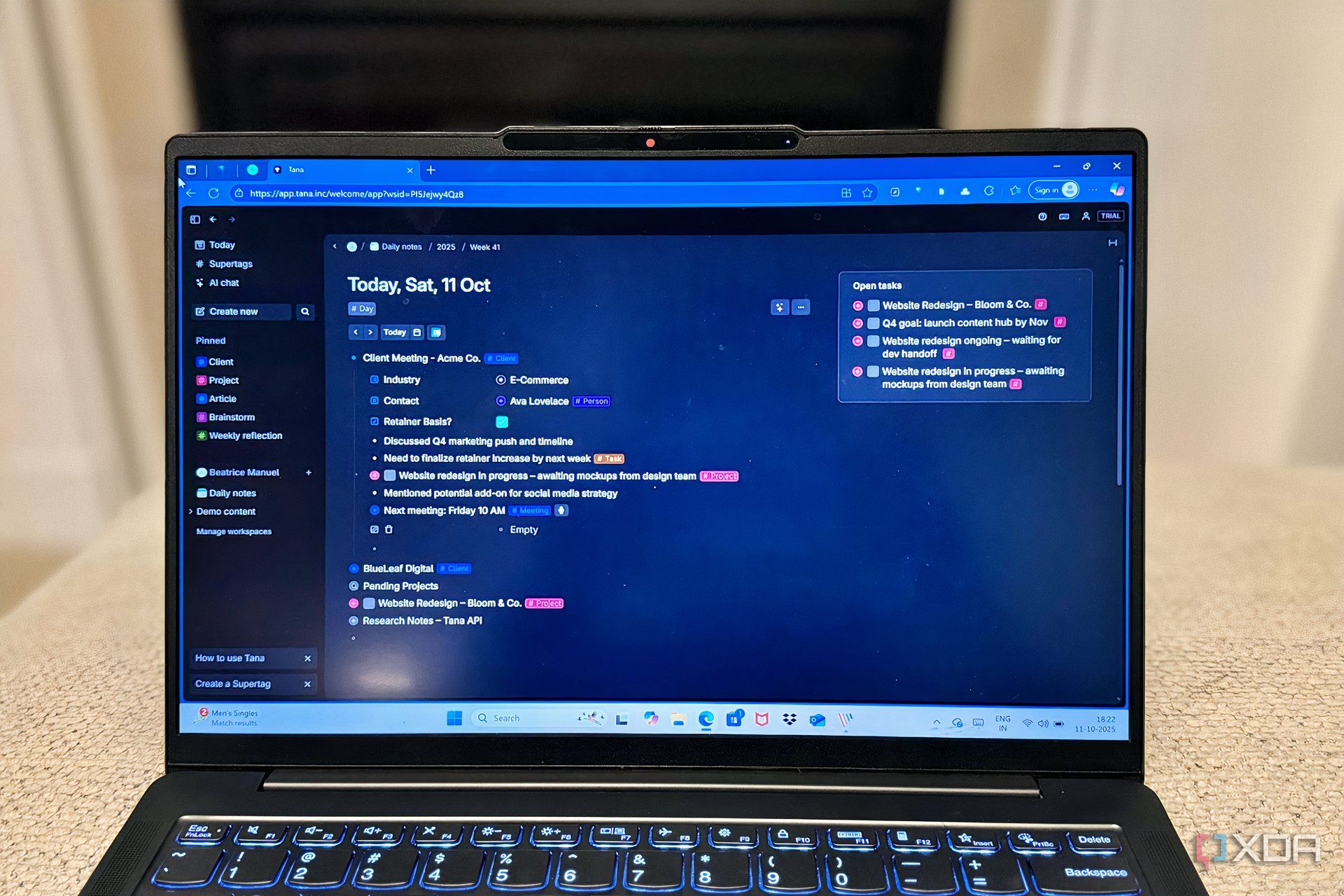Top Stories
Tana’s Supertags Revolutionize Productivity Tools—Immediate Impact!

BREAKING: A transformative breakthrough in productivity software has just emerged with Tana’s innovative supertags, reshaping how professionals manage their workflows. This new approach, revealed earlier this week, combines the freeform nature of outliners with the structured capabilities of databases, marking a significant shift in the productivity landscape.
Users of productivity tools have long faced a dilemma: choosing between rigid systems like Notion or the chaotic freedom of platforms like Obsidian. Tana’s supertags dissolve this trade-off, proving that the future of productivity lies in flexible tools that accommodate both creativity and organization simultaneously.
IMPACT: The implications of Tana’s new system are profound, especially for knowledge workers who need to capture thoughts swiftly while maintaining organized structures. As more professionals turn to Tana, traditional tools like Notion and Obsidian may need to adapt or risk falling behind.
DETAILS: Tana allows users to write freely in a structured outliner format, applying metadata retroactively. For instance, during client meetings, users can tag bullet points with client-specific details without interrupting their thought process. This flexibility enables professionals to create a seamless workflow—capturing ideas and organizing them without the cumbersome setup typically required in other applications.
The supertag system empowers users to develop complex relationships between different types of information effortlessly. For example, tagging a project bullet under a client node with #project allows Tana to automatically display all related projects without the need for manual linking. This innovative approach mimics natural thought processes, allowing users to think fluidly without predefined constraints.
Moreover, Tana has redefined project management. Users can initiate projects without meticulous planning upfront. When working on a website redesign for a client, one can simply create a node, jot down thoughts, and apply tags later—transforming the initial outline into a structured plan organically. This method eliminates the burden of having to build a rigid system before engaging in creative thinking.
In the realm of learning, Tana’s supertags also shine. Traditional spaced-repetition applications, like Anki, require pre-commitment to memorizing information. However, Tana’s #learn supertag allows users to tag key concepts inline, which then seamlessly integrates into their learning workflow. By utilizing a simple search function, users can review learning items based on their current work context, making the process more intuitive and less fragmented.
CONTEXT: Tana’s approach signals a pivotal moment for productivity software. As the demand for versatility increases, tools that blend the spontaneity of outliners with the rigor of databases are likely to dominate the market. The trend suggests that future productivity tools must allow structure to emerge from content rather than impose it upfront.
This development not only impacts individual users but also alters the competitive landscape for productivity software. As traditional applications adapt to this new philosophy of “write first, structure later,” there will be increasing pressure on established tools like Airtable and Notion to incorporate similar functionalities.
NEXT STEPS: As Tana continues to gain traction among users, industry observers will be keenly watching how established platforms respond. Will they evolve to compete with Tana’s innovative approach, or will they risk obsolescence?
For now, Tana represents a significant leap forward, challenging the status quo and opening new avenues for productivity that resonate with how we think and work. The future of productivity software is here, and it is more flexible and user-friendly than ever.
Stay tuned for more updates on this groundbreaking shift in productivity tools as Tana sets a new standard for how knowledge workers can capture and organize their thoughts efficiently.
-

 Science2 months ago
Science2 months agoInventor Achieves Breakthrough with 2 Billion FPS Laser Video
-

 Health2 months ago
Health2 months agoCommunity Unites for 7th Annual Into the Light Walk for Mental Health
-

 Top Stories2 months ago
Top Stories2 months agoCharlie Sheen’s New Romance: ‘Glowing’ with Younger Partner
-

 Entertainment2 months ago
Entertainment2 months agoDua Lipa Aces GCSE Spanish, Sparks Super Bowl Buzz with Fans
-

 Health2 months ago
Health2 months agoCurium Group, PeptiDream, and PDRadiopharma Launch Key Cancer Trial
-

 Top Stories2 months ago
Top Stories2 months agoFormer Mozilla CMO Launches AI-Driven Cannabis Cocktail Brand Fast
-

 Entertainment2 months ago
Entertainment2 months agoMother Fights to Reunite with Children After Kidnapping in New Drama
-

 World2 months ago
World2 months agoR&B Icon D’Angelo Dies at 51, Leaving Lasting Legacy
-

 World2 months ago
World2 months agoIsrael Reopens Rafah Crossing After Hostage Remains Returned
-

 Business2 months ago
Business2 months agoTyler Technologies Set to Reveal Q3 Earnings on October 22
-

 Health2 months ago
Health2 months agoNorth Carolina’s Biotech Boom: Billions in New Investments
-

 Health2 months ago
Health2 months agoYouTube Launches New Mental Health Tools for Teen Users









